"The Marvels of Edirne: The 10 Must-See Places
Nestled in the northwest corner of Turkey, Edirne is a captivating city brimming with history, architectural wonders, and a rich cultural heritage that dates back thousands of years. As the former capital of the Ottoman Empire, Edirne has an abundance of magnificent sites waiting to be explored, making it an essential stop on any traveler's itinerary. Whether you're a history enthusiast, a connoisseur of exquisite architecture, or simply seeking to immerse yourself in the vibrant tapestry of Turkish culture, Edirne offers a wealth of attractions to satisfy every traveler's curiosity.
In this travel guide, we've curated a list of 10 must-see places in Edirne that will take you on an unforgettable journey through time, allowing you to experience the city's fascinating past and present. Get ready to be captivated by Edirne's unique blend of history, art, and culture as you embark on a memorable adventure through this enchanting city.
1. Meriç Bridge
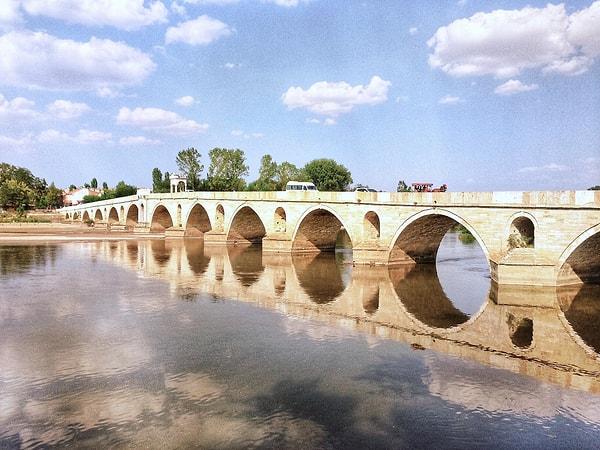
The Edirne Meriç Bridge, also known as the Mecidiye Bridge or Meriç Köprüsü, is a historic and culturally significant structure that spans the Meriç River in Edirne. Completed in 1847 under the reign of Ottoman Sultan Abdülmecid I, this architectural marvel showcases the remarkable craftsmanship of the period. The bridge connects the city of Edirne to its surrounding regions, serving as a vital link for transportation and trade. Designed by the Ottoman architect Ohannes Serveryan, the bridge boasts a total length of 263 meters and is supported by 13 arches, each with a varying span to accommodate the river's natural fluctuations.
The Edirne Meriç Bridge has long been a symbol of unity and progress, reflecting the rich history and heritage of the region. The bridge has withstood numerous floods and other natural disasters, a testament to the strength and durability of its construction. The nearby Selimiye Mosque, another prominent landmark in Edirne, provides a stunning backdrop for the bridge, offering visitors a glimpse into the city's illustrious past. With its blend of history, architecture, and cultural significance, the Edirne Meriç Bridge continues to draw tourists and locals alike, serving as a reminder of the enduring spirit and resilience of the people who built it.
2. Selimiye Mosque

Edirne Selimiye Mosque, a masterpiece of Ottoman architecture, is located in the city of Edirne, Turkey. Designed by the renowned architect Mimar Sinan, the mosque was commissioned by Sultan Selim II and completed in 1575. The mosque's grandiose design represents the pinnacle of Ottoman architectural achievement, showcasing Sinan's unparalleled skill as well as the wealth and power of the empire at its zenith. The Selimiye Mosque stands as a testament to the harmonious fusion of Islamic and Byzantine architectural elements, resulting in a unique and awe-inspiring structure.
The Selimiye Mosque's most striking feature is its massive central dome, which soars 31.28 meters in diameter and 43.28 meters high, resting upon eight slender pillars. This grand dome is flanked by four elegant minarets, each reaching a height of over 70 meters, making them some of the tallest in the Islamic world. The interior is adorned with intricate Iznik tilework, reflecting the artistic prowess of the period, and featuring stunning geometric and floral patterns in shades of blue, green, and red. The mosque's expansive courtyard, with its decorative marble ablution fountain, offers a serene and contemplative space for visitors. Throughout its existence, the Selimiye Mosque has remained a symbol of the splendor of the Ottoman Empire and an enduring source of pride for the Turkish nation.
3. II. Bayezid Complex
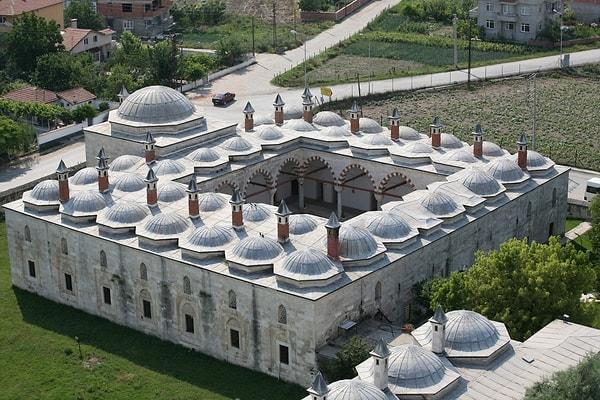
Edirne II. Bayezid Complex, also known as the Sultan Bayezid II Külliye, is a historical architectural masterpiece located in Edirne. The complex was commissioned by Sultan Bayezid II, the tenth Ottoman ruler, in 1484 and completed in 1488. Designed by the renowned Ottoman architect, Mimar Hayreddin, the complex exemplifies the classical Ottoman architectural style of the 15th century.
The complex (a group of buildings centered around a mosque) consists of a mosque, a madrasa (Islamic educational institution), a darüşşifa (hospital), an imaret (soup kitchen), and various other structures intended to serve the local community. Edirne II. Bayezid Complex is an important symbol of the cultural and scientific heritage of the Ottoman Empire, demonstrating the advanced understanding of architecture, medicine, and social welfare at the time.
II.Bayezid Complex
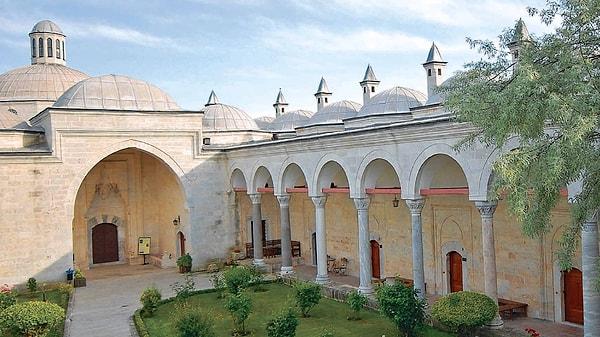
One of the most significant features of the complex is the darüşşifa, which was an advanced medical institution during the Ottoman Empire. The hospital provided treatment and care for patients with various ailments, including mental health issues. It was known for its progressive approach to mental health treatment, which incorporated music therapy and other holistic methods. This was a unique aspect for its time, reflecting the enlightened perspective of the Ottoman medical practitioners.
Today, the Edirne II. Bayezid Complex has been transformed into the Health Museum, which showcases the historical medical achievements of the Ottoman Empire and provides insight into the lives and work of the medical practitioners of the era. Visitors can explore the stunning architecture, learn about the innovative treatments, and immerse themselves in the rich history of the complex.
4. City Forest
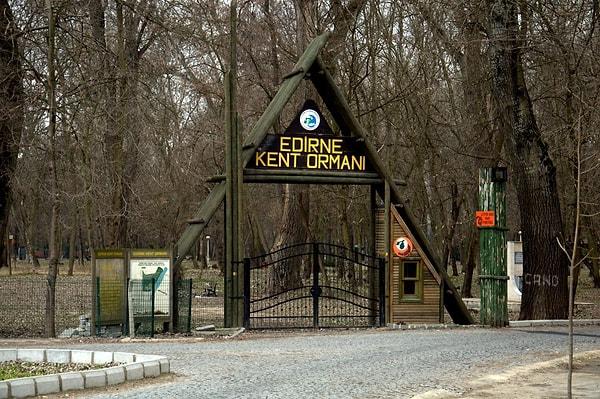
Edirne City Forest, situated on the outskirts of the city, covers a vast expanse of land and provides a serene and picturesque natural escape for locals and tourists alike. Its lush greenery and diverse flora and fauna create a vibrant ecosystem, which plays a crucial role in maintaining the area's ecological balance. The forest is a significant habitat for numerous endemic and migratory bird species, as well as a variety of mammals, reptiles, and insects, making it a popular destination for nature enthusiasts and birdwatchers.
The city forest also offers a wide range of recreational opportunities for visitors to enjoy. The well-maintained network of walking, hiking, and cycling trails weaves through the verdant landscape, providing a perfect way to explore the forest and soak in its natural beauty. Families can often be seen picnicking under the canopy of the towering trees or enjoying the recreational areas designed for children. Educational programs and guided tours are also available to provide insight into the forest's unique ecology and the importance of conservation efforts. The Edirne City Forest serves as a vital green lung for the city, a sanctuary for its wildlife, and a cherished retreat for its people, underscoring the importance of preserving these natural spaces for generations to come.
5. Archaeological Museum
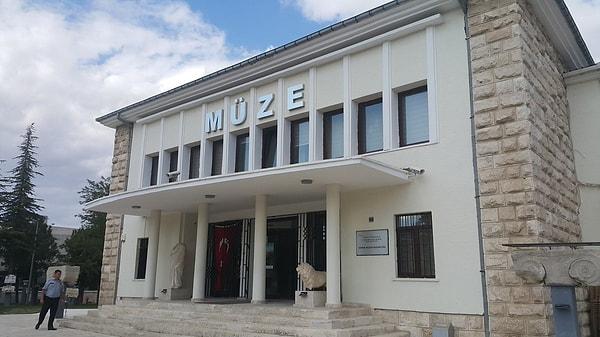
Edirne Archaeological Museum, is a treasure trove of artifacts and relics that showcase the rich cultural heritage of the region. Established in 1925, the museum is housed in a building that was once a military barracks, displaying an architectural blend of Ottoman and European styles. The museum's extensive collection encompasses artifacts from various periods, including the prehistoric era, Hellenistic period, Roman and Byzantine times, as well as the Ottoman Empire. It aims to preserve, exhibit, and promote the understanding of Edirne's history, which has been a melting pot of civilizations throughout the centuries.
The museum's exhibits are divided into two main sections: the archaeological section and the ethnographic section. The archaeological section houses a wealth of findings from excavations carried out in and around Edirne, including sculptures, ceramics, jewelry, and coins that provide insights into the daily lives and belief systems of the people who once inhabited the area. The ethnographic section showcases items that reflect the cultural and artistic heritage of the region, such as traditional textiles, clothing, weapons, and household items. One of the most noteworthy pieces in the museum is the Laodikeia Head, a marble sculpture from the 2nd century AD, which testifies to the artistic prowess of the region. The Edirne Archaeological Museum is a must-visit destination for history enthusiasts and anyone seeking to explore the rich past of this fascinating city.
6. Erikli Beach
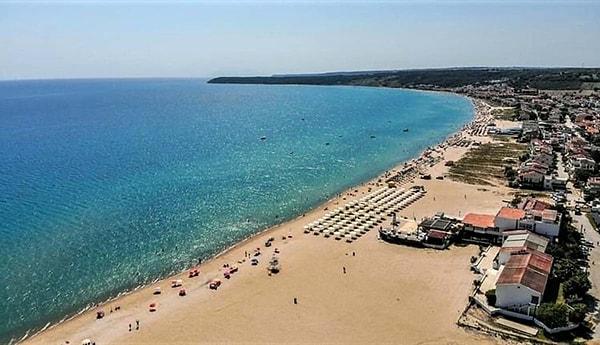
Edirne Erikli is a hidden gem that offers visitors an unforgettable experience along the beautiful coastline of the Marmara Sea. Renowned for its pristine waters and unspoiled, fine golden sand, Erikli Beach serves as a popular summer destination for both locals and tourists seeking a tranquil escape from the hustle and bustle of city life. Surrounded by lush greenery and rolling hills, the area presents a picturesque landscape that adds to its overall charm, making it an ideal spot for nature enthusiasts and beachgoers alike.
In addition to sunbathing, swimming, and enjoying water sports, visitors to Erikli Beach can also explore the nearby historical sites and quaint villages that showcase the rich culture and history of the region. The close proximity to the city of Edirne, once the capital of the Ottoman Empire, offers the opportunity to visit various architectural marvels and museums, such as the Selimiye Mosque and the Edirne Museum. Furthermore, the area is known for its vibrant local markets and delicious regional cuisine, which provide an authentic taste of Turkey. With its perfect blend of natural beauty, history, and culture, Edirne Erikli Beach offers an unforgettable experience for travelers seeking a peaceful retreat.
7. Rüstem Pasha Caravanserai
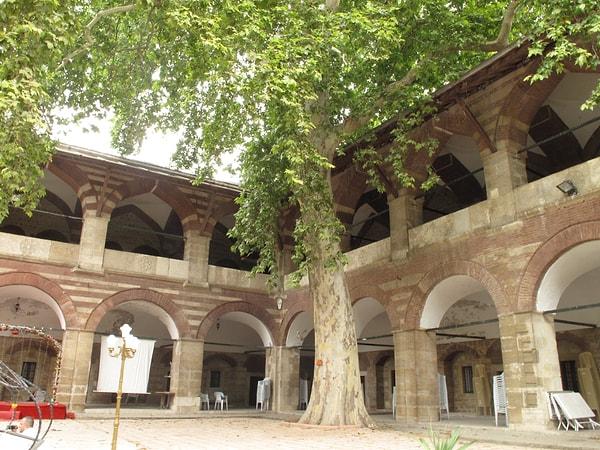
Rüstem Pasha Caravanserai is a historically significant structure located in Edirne. This caravanserai was commissioned by Rüstem Pasha, a prominent statesman and the Grand Vizier of the Ottoman Empire, who was married to one of the daughters of Sultan Suleiman the Magnificent, Mihrimah Sultan. Rüstem Pasha was well known for his contribution to the development of the empire, particularly in the field of architecture. The caravanserai was built in the mid-16th century, during the golden age of Ottoman architecture, and is a fine example of the period's design elements and techniques. It served as a key resting place for travelers and merchants along the trade routes passing through Edirne, offering them shelter, food, and a place to rest their animals.
Rüstem Pasha Caravanserai is designed in a rectangular layout with a central courtyard, surrounded by chambers and rooms that once accommodated the travelers and their animals. The main entrance, adorned with elaborate stone carvings, leads into the courtyard, where a small mosque, or mescit, is located. The building's architecture exhibits a blend of traditional Ottoman and local influences, with a combination of stone and brickwork that creates a visually appealing contrast. The caravanserai has been restored and preserved to maintain its historic integrity, and it now serves as a cultural center and museum, showcasing the rich history of the region and the life of travelers and merchants during the Ottoman era. Visitors can experience the vibrant atmosphere of the past while also appreciating the beauty and intricacy of the caravanserai's architecture.
8. Turkish and Islamic Art Museum
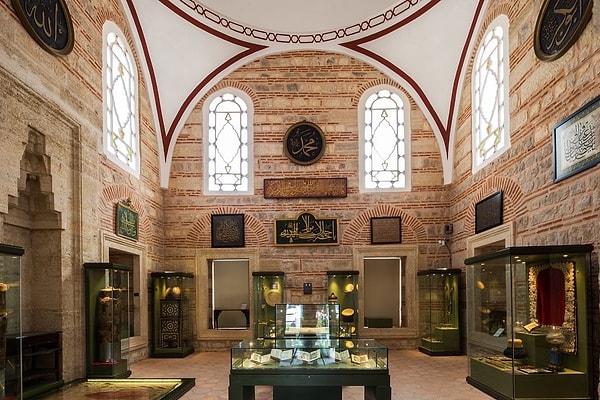
Edirne Turkish and Islamic Art Museum is a renowned institution that showcases the rich cultural heritage of Turkish and Islamic art. Housed in the grandiose building of the former Imaret Mosque, which was built by Sultan Murad II in the 15th century, the museum offers an unparalleled experience for visitors interested in exploring the evolution of Turkish and Islamic art throughout history. The museum's collection includes a diverse range of artifacts, such as calligraphy, textiles, ceramics, and metalwork, that reflect the profound artistic legacy of the Ottoman Empire and the broader Islamic world.
In addition to its impressive exhibits, the Edirne Turkish and Islamic Art Museum also serves as an important center for research and education. The museum hosts conferences, seminars, and workshops aimed at fostering a deeper understanding of the historical, artistic, and cultural significance of the objects on display. These events bring together academics, students, and enthusiasts from around the world, allowing them to exchange ideas and expand their knowledge of Turkish and Islamic art. By promoting the appreciation and preservation of this unique artistic heritage, the Edirne Turkish and Islamic Art Museum contributes to the cultural richness of not only Turkey but the entire world.
9. Muradiye Mosque

Edirne Muradiye Mosquei s a historically significant mosque located in Edirne. Constructed between 1433 and 1436, it was commissioned by Sultan Murad II, the seventh Ottoman ruler, and was named in his honor. The mosque is a fine example of early Ottoman architecture, showcasing the transition from the Seljuk to Ottoman styles. Renowned architect Haci Alaeddin, also known as Atik Sinan, was responsible for the design and construction of the mosque, which has since become an important symbol of Turkish history and culture.
Muradiye Mosque features a simple yet elegant design with a single dome, which was a common feature in early Ottoman architecture. Inside, the mosque is adorned with beautiful calligraphy and intricate tilework, while the exterior is characterized by its grand entrance portal, flanked by twin minarets. The building's simplicity is complemented by the surrounding garden and courtyard, providing a serene atmosphere for worshippers and visitors alike. The mosque also houses the tombs of Sultan Murad II and other members of the royal family, making it a significant site for those interested in the Ottoman Empire's history. Over the years, the Edirne Muradiye Mosque has not only served as a place of worship but has also played a crucial role in the preservation of Turkish cultural heritage.
10. Hıdırlık Bastion
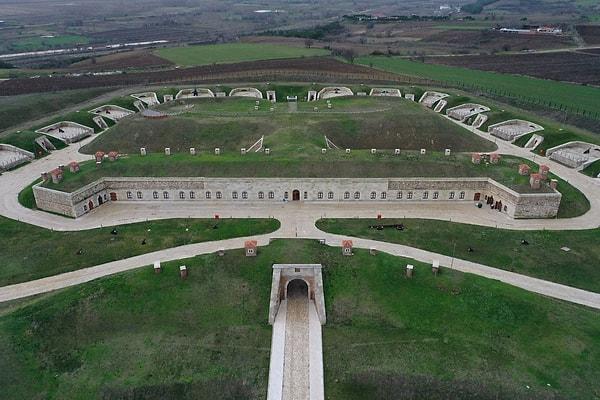
Hıdırlık Bastion is an ancient architectural structure located in Edirne, Turkey. This impressive fortification is a prime example of Ottoman military architecture and has a rich history that dates back to the 15th century. The bastion was constructed under the reign of Sultan Mehmet II, also known as Mehmet the Conqueror, who played a significant role in expanding the Ottoman Empire. Strategically placed on the banks of the Tunca River, the Hıdırlık Bastion served as an essential component of the city's defensive system, guarding Edirne against potential invasions and ensuring the safety of its inhabitants.
Over the centuries, Hıdırlık Bastion has undergone various modifications and renovations to meet the changing needs of the city's military defenses. The bastion's original design featured an earth-filled, trapezoidal structure, which was eventually replaced with a more advanced, polygonal design in the 18th century. The bastion's walls were reinforced with brick and stone, allowing it to withstand powerful artillery fire. Today, Hıdırlık Bastion stands as a testament to the ingenuity and prowess of the Ottoman military architects, and it attracts numerous visitors each year. As a significant cultural and historical landmark, the bastion offers a unique insight into the past of Edirne and its importance within the Ottoman Empire.
Keşfet ile ziyaret ettiğin tüm kategorileri tek akışta gör!

Send Comment